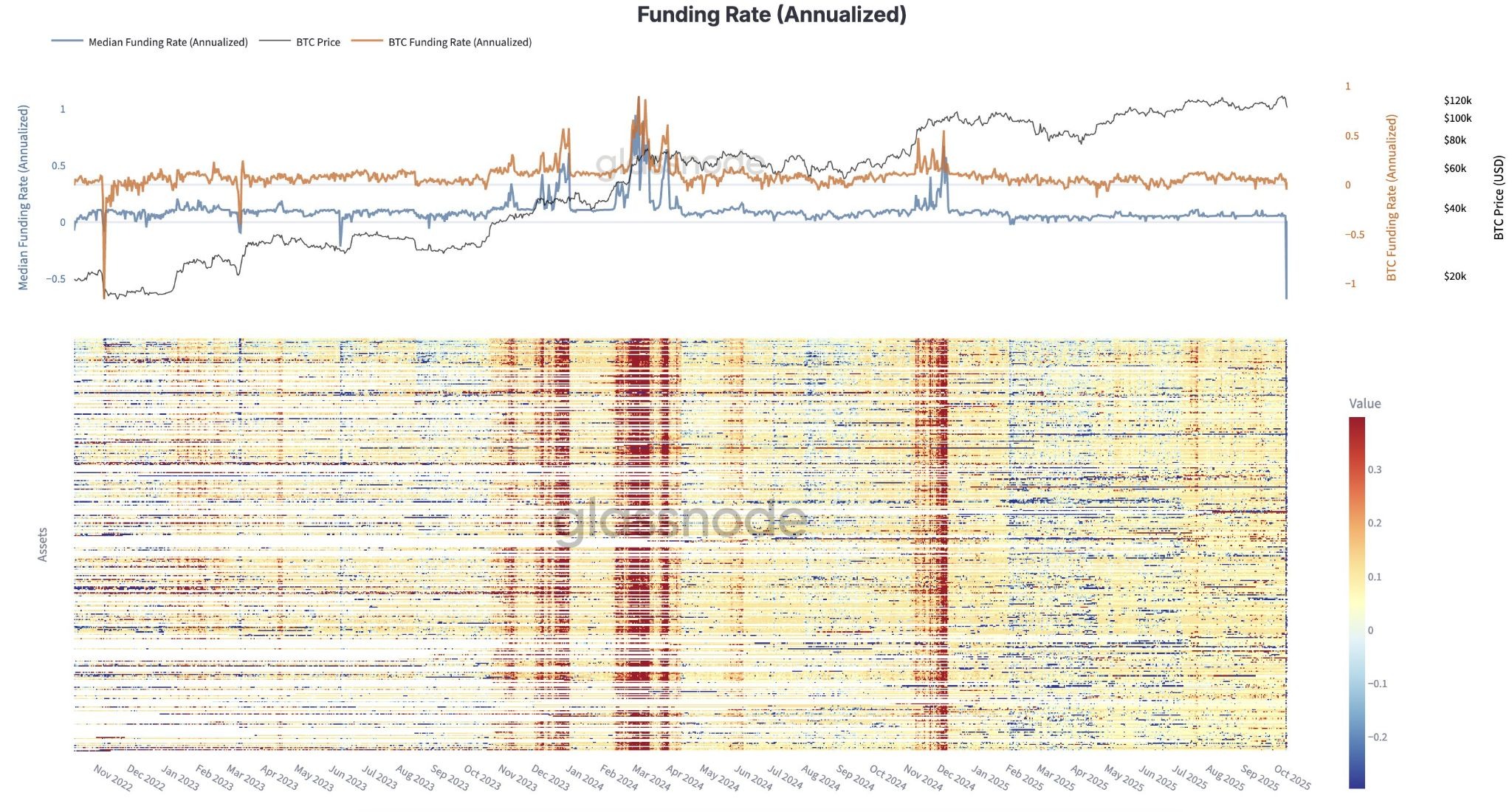
Funding Rates for Crypto Derivatives Hit Three-Year Lows: Is This a Sign for Enthusiasm?
Crypto derivatives funding rates have sharply decreased, reflecting the sentiments of traders and potential market shifts.
Funding rates in the crypto derivatives arena have reached their most diminished levels since the bleak phase of the bear market in 2022, as numerous leveraged positions faced liquidation over the weekend.
The drop in funding rates was highlighted by blockchain analytics company Glassnode on Sunday, indicating a significant reset in leverage within the crypto space.
“This marks one of the most severe leverage resets in crypto history,” according to analysts from Glassnode, as they pointed out that it signals the purging of speculative excess from the market.
Funding rates, which are periodic payments between traders involved in perpetual futures contracts, help maintain the connection between contract prices and the actual spot prices.
When these rates become extraordinarily low or even negative, it indicates a surge in short positions, suggesting that speculators expect market prices to decline, leading them to cover the costs of holding shorts.
The Power of Too Many Short Positions
Even with the current extremely low funding rates, there exists a bullish potential since an oversold market with excessive short positions might result in a short squeeze if prices start to rise.
 Funding rates dropped to levels unseen since 2022
Funding rates dropped to 2022 lows. Source: Glassnode
Funding rates dropped to levels unseen since 2022
Funding rates dropped to 2022 lows. Source: Glassnode
Recovering Crypto Markets
Current data suggests a recovering sentiment in crypto markets, as the CoinGlass long/short ratio reflects a bullish alignment. Approximately 54% of market participants are expressing positive sentiments, while 16% hold neutral views, and 29% remain bearish.
The long accounts are presently at 60% while 40% operate in a short capacity, although funding rates are still slightly negative for Bitcoin and Ether perpetual swaps as per CoinGlass reports.
An Unprecedented Liquidation Event
The recent liquidation event, often referred to as the crypto black Friday, witnessed a staggering $1 trillion drop in total market capitalization, attributed to significant leverage flushes in a matter of hours triggered by governmental tariff announcements. The aftermath led to the liquidation of 1.6 million traders holding leveraged long positions.
This volatility surmounted to unprecedented instances like the initial $20,000 drawdown in Bitcoin’s value, amounting to a $380 billion decrease in its market cap, before stabilizing again.
Leverage flushes are recognized as essential occurrences in the markets, contributing to necessary resets after the accumulation of excessive speculation in crypto derivatives.


